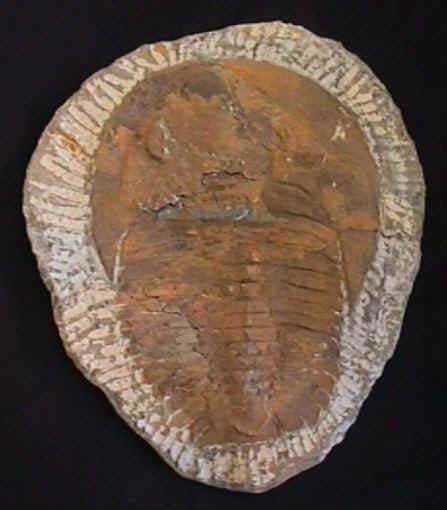
("Atdabanian" Age)
| Paleozoic Era |  |
Cambrian Epoch 2 |
| Cambrian Period | Cambrian age III ("Atdabanian" Age) |
| Page Back | Back: Tommotian | Back: Terreneuvian | Up: Cambrian Epoch 2 | Unit Home |
| Page Next | Next: Botomian | Next: Middle Cambrian | Timescale |
The ICS has not yet tied down all the subdivisions in what used to be the Early Cambrian. Where they don't, we apply the Russian-Kazakhian regional nomenclature. The Atdbanian Age was the third stage of the epoch formerly known as the Early Cambrian. Actually, the ICS doesn't recognize the Early Cambrian, either, and has tentatively divided the first 29 My of the Cambrian into two (one unnamed) epochs, which are each to contain two (likewise unnamed) ages with appropriate (but unspecified) base dates. They will get around to telling us all about it at some (unstated) time in the next year or two -- just as the (unprintable) ICS has been saying for the last ten years. Accordingly, we are somewhat hard put to say what goes where. We think the Atdabanian corresponds to Stage 3 because the ICS rashly let slip that Stage 3, like the Atdabanian, should begin with the first appearance of trilobites. But be warned. ICS could decide anything -- or nothing.
During this important age their appeared of macroscopic calcareous (and silica and calcium phosphate) hard parts in many metazoan types, especially the Lophotrochozoa (in brachiopods and mollusks), Ecdysozoa (in arthropods), and Deuterostomia (in echinoderms and vertebrates). As we said, trilobites appeared for the first time, and were to continue to flourish for some hundred million years or more, before going into a slow decline at the end of the Ordovician. Also appearing were Anomalocarids, which became the dominant life form probably until the end Cambrian extinction.


 As
always, its useful to check the Geowhen
Database for the latest from the ICS and for correlation with other
systems of chronology. This is particularly true for periods, such as the
Cambrian, in which the ICS has not yet completed its work. For a quick
orientation, see The Cambrian Explosion, U of Mn lecture notes.
There are many good links on the Atdabanian Age because many of of the Chenjiang
and Sirius Passet fossils are of this
age. Many good sites can be found by searching on those names. One
of these is an on-line paper by Zhang
et al. (2004), describing new lophophorates (Lingulellotreta)
with amazingly detailed preservation from Chenjiang. Earlier work from the
same group can be found here.
The Atdabanian is also the time during which, according to one school of
thought, the the rotational axis of the Earth migrated extensively for unknown
reasons. A copy of the original eyebrow-raising paper by Kirschvink
et al. (1997) is available. ATW050820.
As
always, its useful to check the Geowhen
Database for the latest from the ICS and for correlation with other
systems of chronology. This is particularly true for periods, such as the
Cambrian, in which the ICS has not yet completed its work. For a quick
orientation, see The Cambrian Explosion, U of Mn lecture notes.
There are many good links on the Atdabanian Age because many of of the Chenjiang
and Sirius Passet fossils are of this
age. Many good sites can be found by searching on those names. One
of these is an on-line paper by Zhang
et al. (2004), describing new lophophorates (Lingulellotreta)
with amazingly detailed preservation from Chenjiang. Earlier work from the
same group can be found here.
The Atdabanian is also the time during which, according to one school of
thought, the the rotational axis of the Earth migrated extensively for unknown
reasons. A copy of the original eyebrow-raising paper by Kirschvink
et al. (1997) is available. ATW050820.
| Page Back | Unit Home | Page Up | Page Top | Page Next |